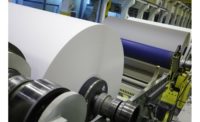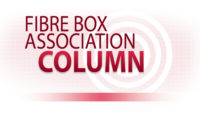Flexible Packaging spoke with Mika Joukio, CEO of Metsä Board, to share his thoughts on sustainable packaging, package design trends and the impact of COVID-19 on the paperboard industry.
How has COVID-19 influenced the paperboard industry in terms of sustainability?
During the pandemic, safety and hygiene requirements have grown, supporting the use of pure and ecological packaging materials. Consumers prefer packaged food instead of loose produce.
Online shopping has grown during the pandemic and this development is expected to continue, impacting the rising demands for sustainability. High quality white kraftliners support sales promotion and differentiation in the growing E-commerce segment, where durability and lightweight are key requirements for packaging.
Our development programs continue despite COVID-19 and we are moving toward our 2030 targets, which include fossil-free mills and raw materials. We have always paid special attention to the safety of our paperboards and their production and will continue to do so. For example, we follow the same Global Food Safety Initiative’s (GFSI) requirements in our mills as our customers do in the food industry.
How can companies contribute to sustainable solutions within the industry?
There are various ways to contribute. It starts with the raw material. At Metsä Board, we use pure, fresh wood fibers sourced from sustainably managed Nordic forests. Metsä Board has pulp production of its own and we hold a 24.9% share in Metsä Fiber — our sister company concentrating on pulp production. The pulps we use are tailored for our paperboards, providing a high and constant quality. And we also know where our raw materials are coming from. The pulp mills play a significant role on our way towards our ambitious target of fossil free mills by 2030, which also applies to fossil-free raw materials.
We continue to develop lightweight paperboards that use less raw materials, energy and water, decrease transport weights and produce less waste at the end of the packaging life cycle, as our paperboards are also recyclable.
Another area that we focus on is in our barrier development. We have introduced a new ecological barrier paperboard that helps reduce plastic and is easily recyclable as well as compostable. In addition, it is also lightweight.
One important area that can have a big effect on the environment is package design. Smart package design enables the reduction of materials and makes recycling easier, while at the same time, protecting the product inside, which is the most important job of the package.
What innovations and technologies, if any, are influencing paperboard for sustainable packaging solutions?
The development of plastic-free barrier solutions as well as technologies that enable production of even lighter paperboards are important when thinking about sustainable developments. We also study new technologies. For example, Metsä Group’s innovation company, Metsä Spring, has begun the construction of a new pilot plant in Äänekoski, Finland that will convert wet wood pulp into ready-to-use 3D fiber products without any intermediate steps. These products could end up replacing plastic in a variety of packaging solutions.
How can sustainability targets be conveyed to consumers?
Brand owners play an important role here. We are also collaborating with our brand owner customers to offer them facts and insights regarding their packaging material choices. It's important to recognize that not everyone is at the same level of understanding or has a technical background. Therefore, communication about sustainability must be quick, easy to understand and speak directly to the issues that consumers care about.
Are there any trends happening in regards to packaging design?
The big trends we see include decreasing use of plastics and Styrofoam, and simplifying the structural design. Product photos are also increasingly replacing windows on packaging, which also supports sustainability. The acceleration of online shopping has put the focus on product protection and user experience.
By optimizing the materials and structure of packaging, we can provide our customers with even more sustainable and high performing packaging solutions. This past year we opened a new Excellence Center that offers an efficient development platform for our research and development facilities, a packaging design studio, a customer feedback center and a state-of-the-art laboratory offering more than 100 different analysis methods. The Center’s services also include a virtual store environment and a computer-based simulation tool (CAE), which enables us to analyze and model the performance of packaging.
For more information, visit www.metsaboard.com.








